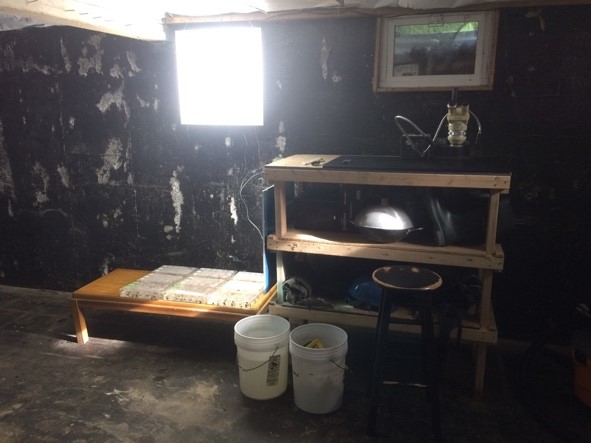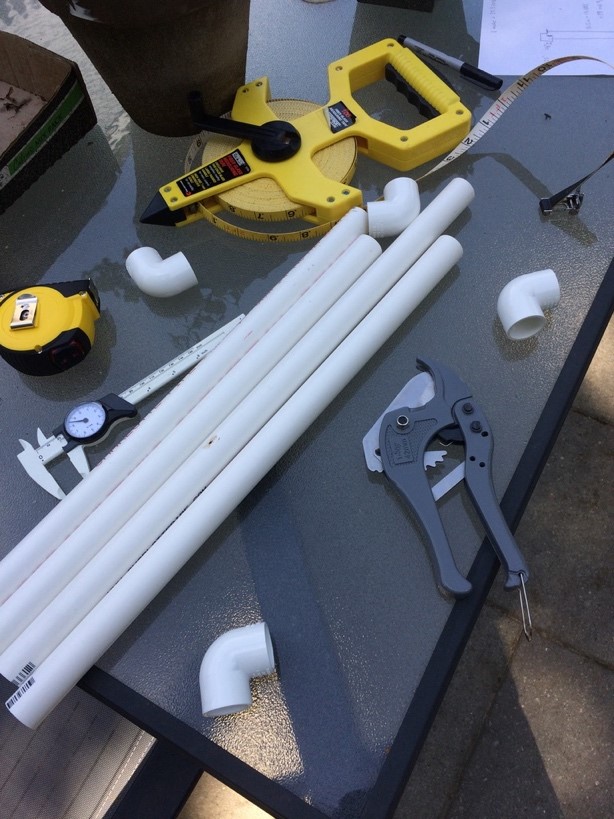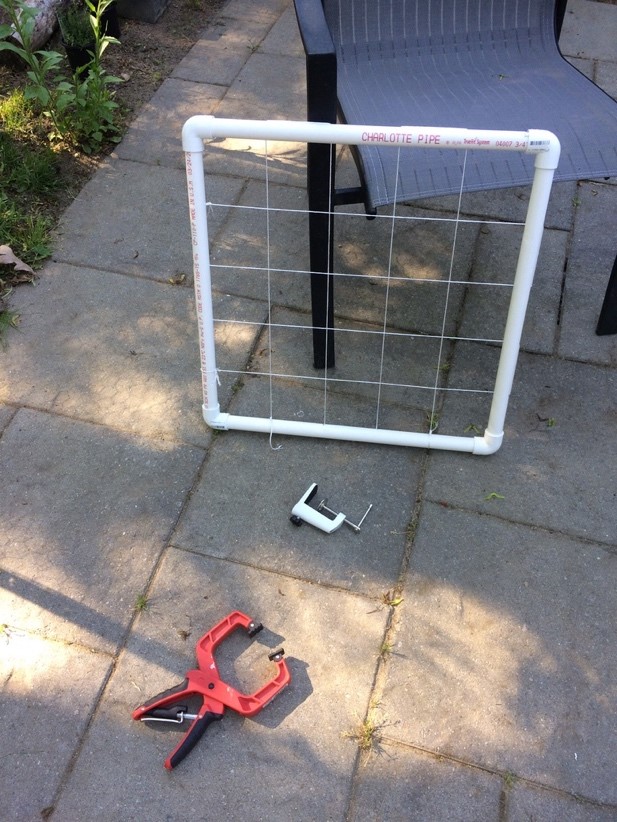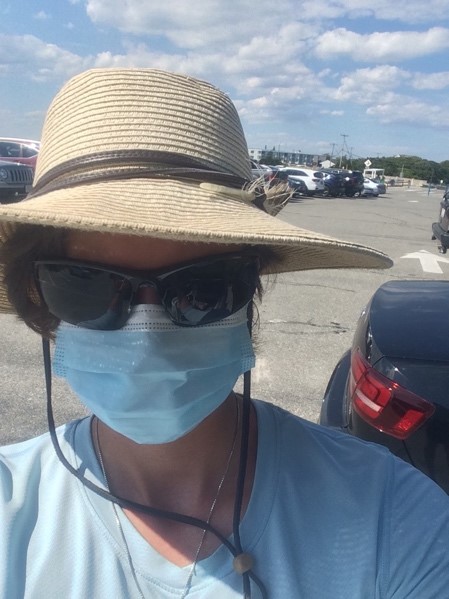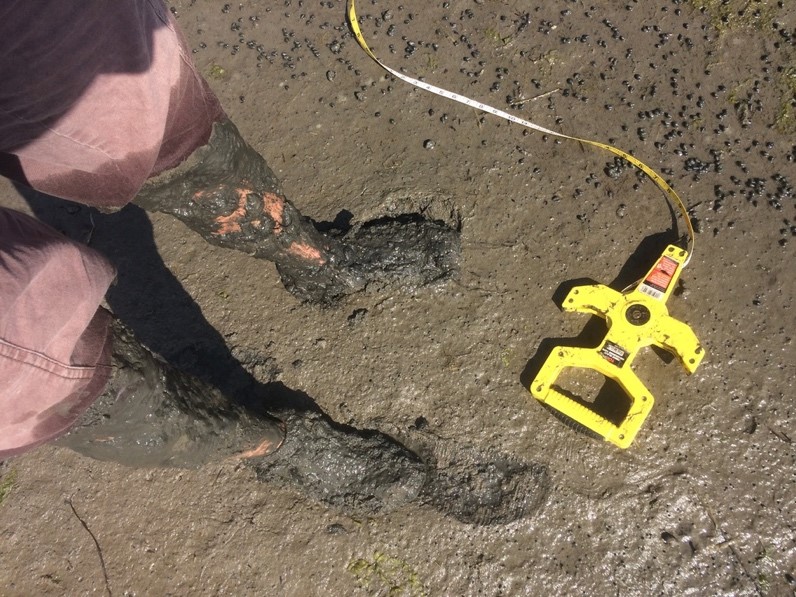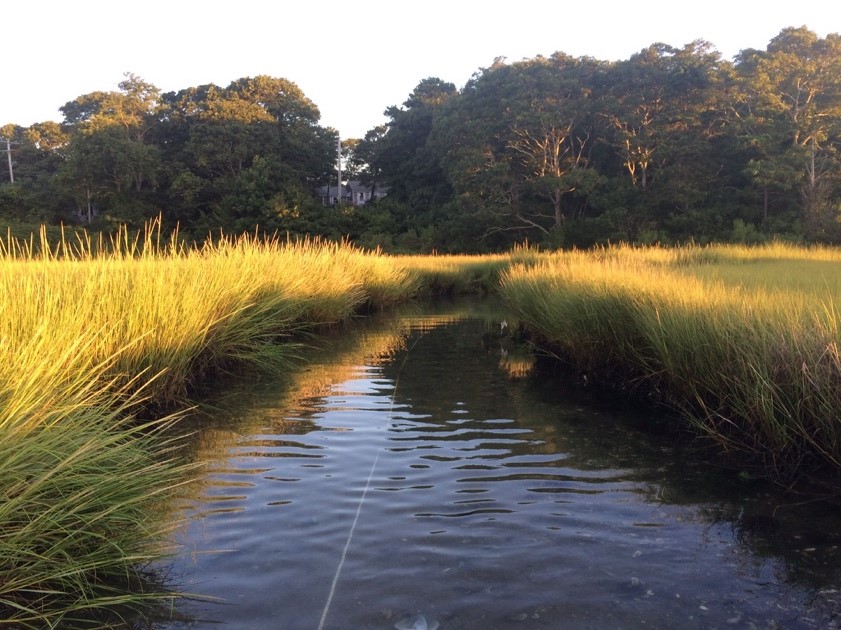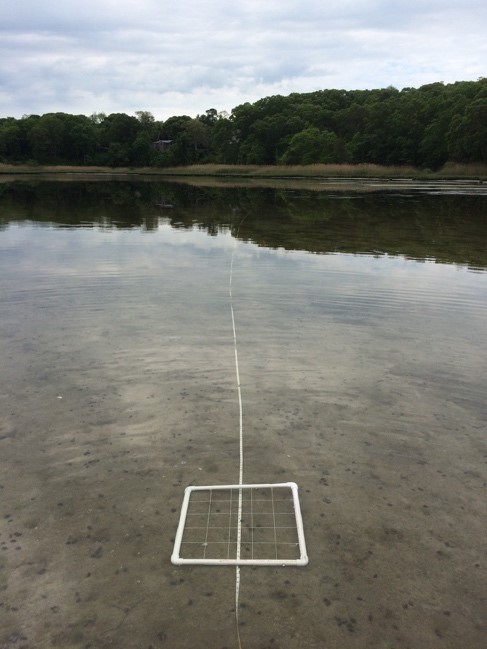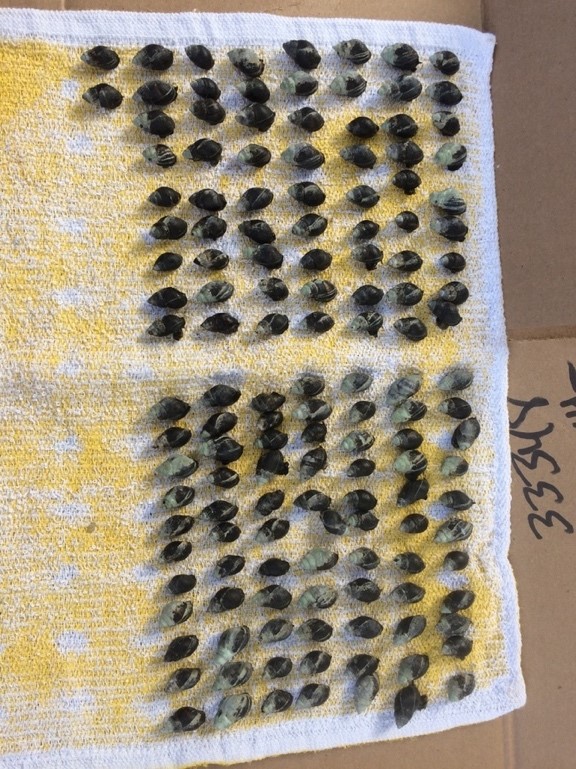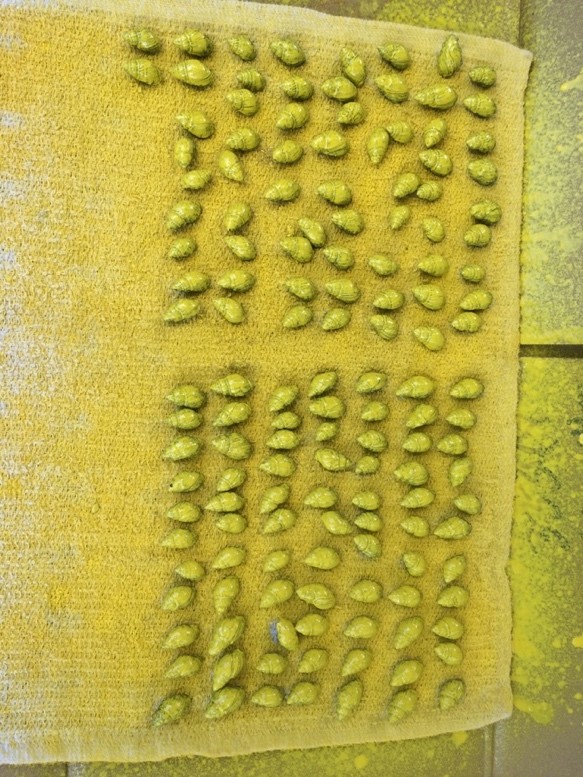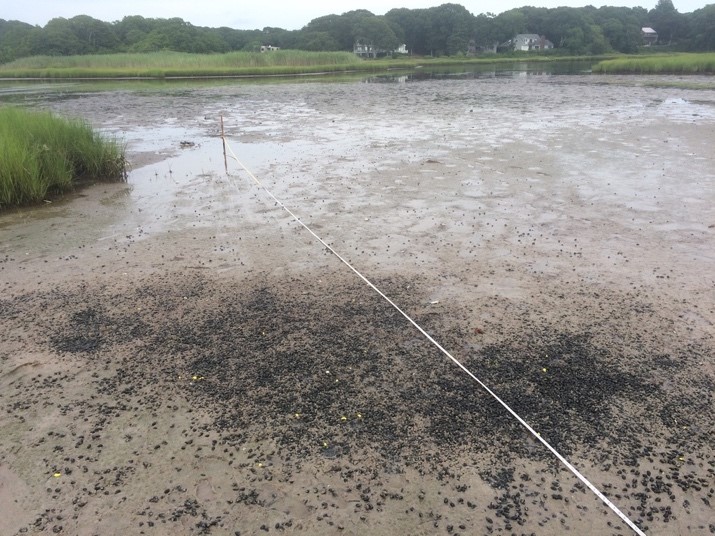A Marine Ecologist Works From Home
(This post was written by JPBO student Lauren Dykman, October 2, 2020)
The order came suddenly: work from home. We had only a handful of days to move out of our labs at Woods Hole Oceanographic Institution and into home offices. We all started to think creatively. Personally, I had planned to spend the next several months dissecting frozen animals from deep-sea hydrothermal vents, which I’d managed to offload from the research vessel Atlantis only hours before WHOI closed. I couldn’t work with these samples at home, so I had to come up with a new research plan. So, how does a marine ecologist work from home? This is the story of how I ended up with hundreds of snails and their parasites in my bedroom closet.
For the last two summers, I had been studying parasitic worms called trematodes that live in Atlantic mud snails, which are abundant in estuaries around Cape Cod. Last summer, an undergraduate lab mate and I discovered that the composition of parasites in snails is very different across estuaries, and changes over time. I was curious what factors lead to these patterns in parasite abundance and diversity, so I planned some experiments.
First, I needed a lab. Back at WHOI, I had access to a room with aquaria and flowing seawater, plus a dissecting station with a nice microscope. So, I got permission to enter the Institution for one day to grab a carload of supplies and move them down to my home basement. After an afternoon of sweeping, rearranging, and setting up crude lighting, “basement lab” was born.
I planned a number of surveys and experiments to better understand the biology of the snails and their parasites. These required one of an ecologist’s favorite sets of tools: a transect tape and a quadrat. The transect tape is a large tape measure that lets a researcher lay out a line in order to sample the same place over time. The quadrat is a square frame divided into smaller squares that allows a researcher to count animals or plants (or whatever) in a known area. Both these tools reduce bias and inconsistency in surveys. The problem was, I didn’t have a quadrat. I solved this with a trip to the hardware store and an afternoon of arts and crafts. PVC pipe, along with zip ties and duct tape, is one of the essential building materials of a field ecologist.
Building a quadrat with supplies from the hardware store.
Going into the field during a pandemic was strange, needless to say. In prior summers, trips to beaches and estuaries were a fun reprieve. Now, they involved nervously dodging summer traffic in full parking lots, wearing a mask. I felt self-conscious being that mysterious person laden with gear who, rather than joining the sunbathers on the white sandy beaches, veered inland into the marsh to wallow in mud.
Avoiding crowds in a Summer 2020 beach parking lot on Cape Cod (left). Knee-deep in mud (right).
A 5am survey at Waquoit Bay National Estuarine Research Reserve was exhausting yet beautiful (left). Using the quadrat and transect tape at Little Sippewissett Marsh (right).
The first part of the study was figuring out what percentage of snails were infected with parasites. The parasites in question, trematodes, are worms that live in the snail’s gonad (yep) and churn out clones, which leave the snail as swimming larvae to seek their next host. To check for parasites, I collected snails, placed them in individual wells of sea water (which I called “snail condos”), and inspected the water for swimming parasite larvae after two days . This method of screening for infection was noninvasive, meaning I could return the snails to their natural habitat after their brief “vacation.”
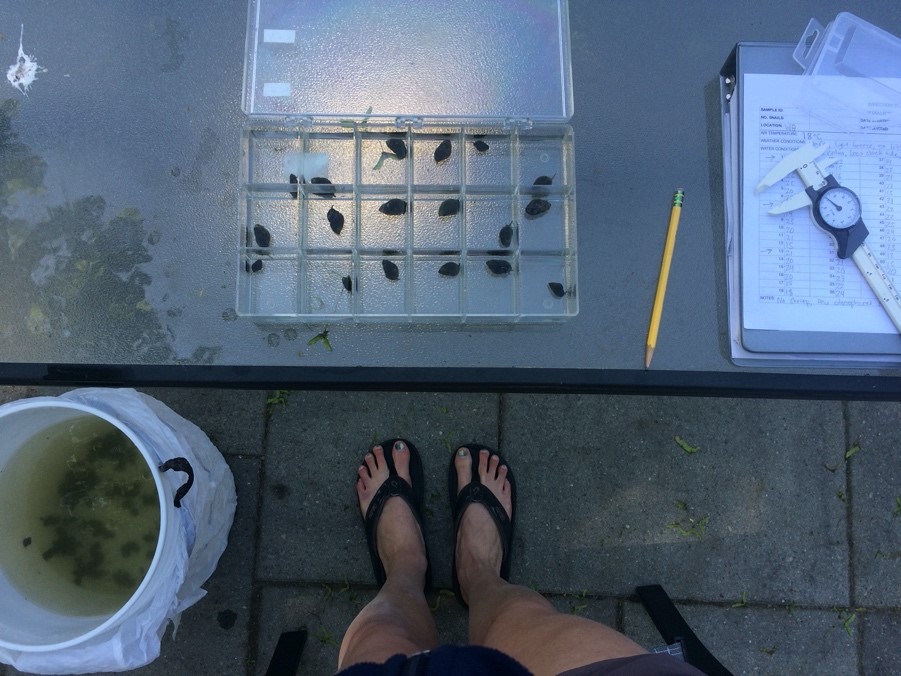
Placing snails into “condos” at the patio table (with home lab-appropriate footwear).
Video of swimming parasite larvae after they have left the snail host. These are called cercariae, and they are less than 1 mm in length.
The first time I tried this procedure at home I ran into a problem. From reading scientific papers, I knew trematode parasites release larvae most reliably at warmer temperatures. But “basement lab” was very cold. I was afraid the cold would skew my results, and I wouldn’t find any parasites, even if the snails were infected. Gradually, and somewhat reluctantly, I accepted the obvious solution. This is when I moved the condos, the snails, and their associated parasites into my bedroom closet. During this period of quarantine, our house occupancy swung between 2 and 202. At night, I was haunted by the sounds of snail shells clicking against the plastic boxes. There is an ironic humor in this situation that would make a parasitologist chuckle: some parasites are able to manipulate their host’s behavior to make further infection more likely. Here, in an extreme case of host manipulation, these parasites had enticed me to invite them into my home by tempting me with a chance at completing a PhD.
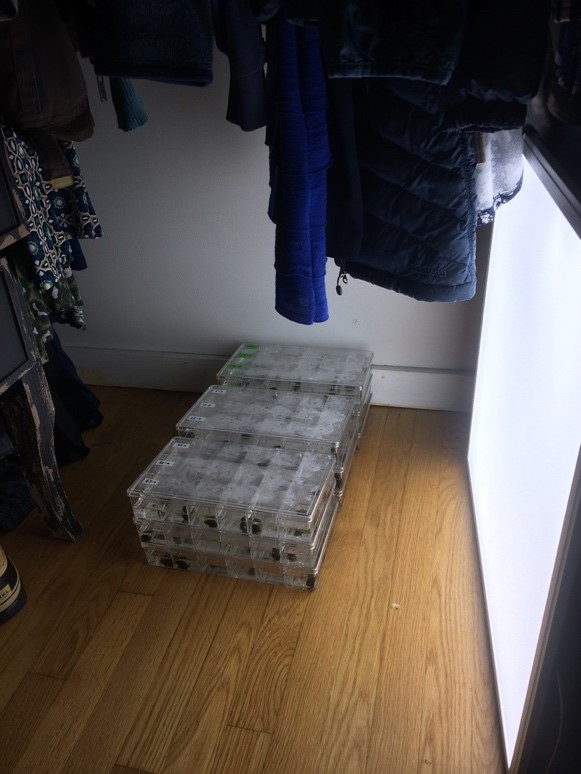
The day I invited marsh snails into my closet.
The results of the “closet parasite surveys” were stark: the percentage of infected snails varied drastically, even over short distances within a single estuary. I started to wonder, could the movement of snails, rather than just the processes of parasite infection and recovery, contribute to these patterns? Perhaps snails hardly moved, but the chance of getting infected varied across the estuary. Or alternately, infected snails may be more likely to migrate to certain locations than uninfected snails. This led to the most fun experiment of the summer – figuring out how snails move.
Another classic technique in field biology is the “mark-recapture study.” This involves marking animals, releasing them, then finding them at a later time. I spray-painted several hundred snails in our driveway, released them at a single point in the marsh, returned five days later with a tape measure, and squelched knee-deep in mud to each painted snail, measuring its progress.
During this process, I set up a GoPro on time lapse, curious what it would reveal about the secret lives of snails. This turned out to be the most revealing method, as it proved snails can really cruise! Sometimes, snails would move in patterns that appeared random and end up evenly spaced. At other times, snails would all travel together in one direction, a behavior I called “streaming” or “herding.” In some places, snails would form huge, stationary piles, or “aggregations.” Next summer, I want to plan experiments to figure out what causes snails to switch between these different patterns of movement, and how host movement functions to disperse parasites.
Working from home required everyone to shift plans and perspective. For my research, as for my personal life, it caused me to live and think locally. I allowed myself time that I otherwise would not have taken to truly see the ecosystems right in my own neighborhood and become acquainted with the lifeways of my animal neighbors. This reawakened an appreciation and fascination for the mysteries and intricacies that play out right in front us, every day. Science does not necessarily require expensive instruments or international travel. Sometimes it just takes some PVC pipe, a bit of home improvement, and a whole lot of mud.
Time lapse video of snails "streaming" at Little Sippewissett Marsh.
Time lapse video of painted snails released next to aggregations at Little Sippewissett Marsh.
